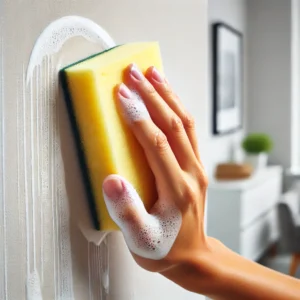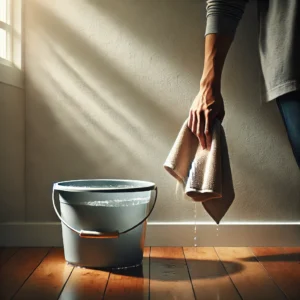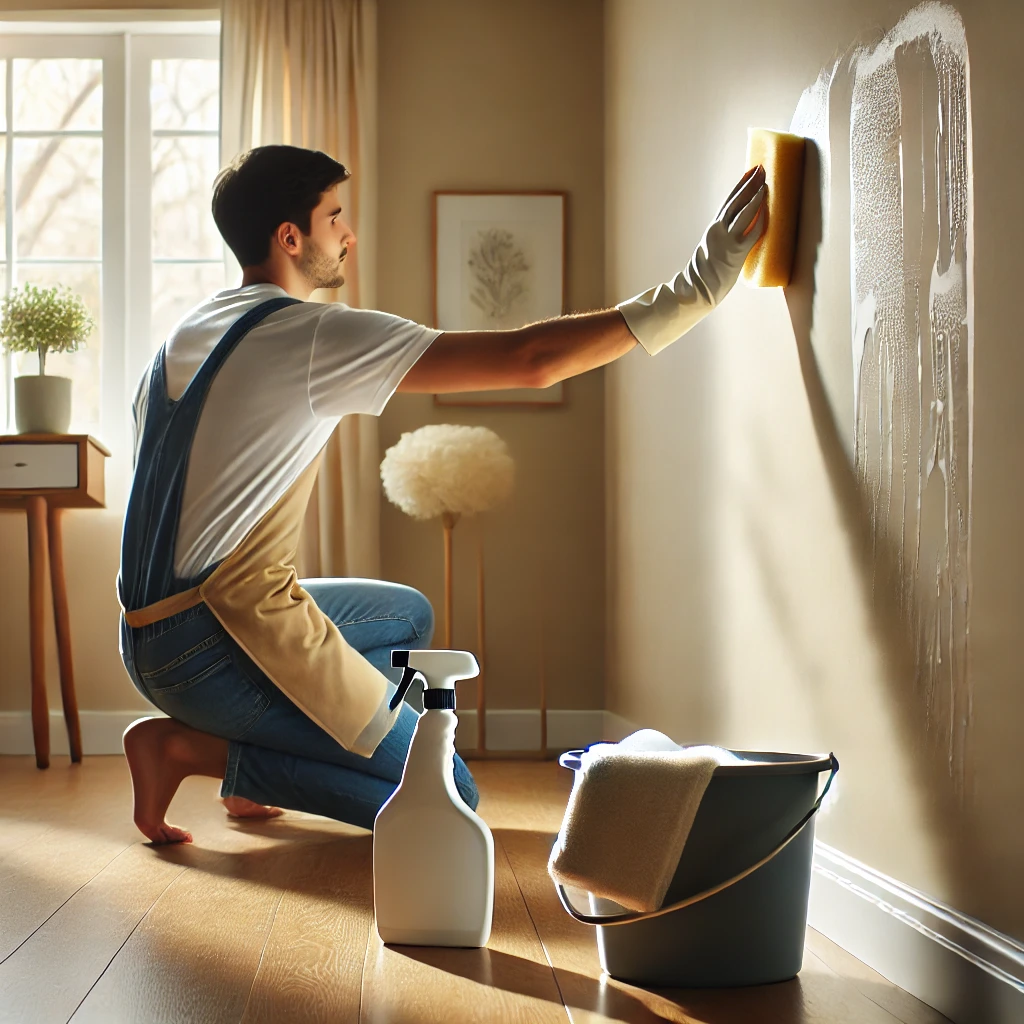Keeping your walls clean can make the difference between a lively, fresh home and a stale one. Dust, dirt, and even some scuff marks tend to build up slowly on your home walls. Here is an easy step–by–step method that helps you keep your walls spotless and fresh-looking without harming the paint or finish.
Why Keep Your Walls Clean?
Cleaning the walls regularly is an excellent habit for maintaining healthy indoor air quality while keeping your home beautiful. Removing dust, allergens, and stains from walls prevents mould growth, which prolongs the life of your paint and creates a healthy living space for you and your family.
Basic Materials Needed for Cleaning Walls
Gather the following before you start:
- Soft cloths or microfiber towels
- Vacuum with a brush attachment
- Warm water bucket
- Mild dish soap or detergent
- Baking soda (for tough stains)
- White vinegar (optional for greasy stains)
- Sponge or soft-bristle brush
- Ladder, if needed to reach top spots
How to Clean Walls

Clear the Area: Push furniture away from walls. Cover the floors with cloth or plastic sheeting, in case drips happen.
Dust the Walls: Dust the walls to remove loose dirt and dust. Use a vacuum cleaner with a brush attachment or a microfiber cloth to reach all corners, edges, and trim areas.
Test the Cleaner: Before applying any cleaner, test a small, inconspicuous area of your wall to ensure it won‘t damage the paint or finish.
Preparing Cleaning Solution: Combine in a bucket a few drops of mild detergent or dish soap with warm water. White vinegar can be added a few tablespoons if there are heavy cases of dirt. It dissolves grease and grime well. Do not, however, add too much soap as it could be left as residue on your walls.
Start at the Bottom: Dip a soft cloth or sponge in the cleaning solution, wring it out as much as possible, and start from the bottom to avoid streaks. Rub gently in a circular motion.
Fight Tough Stains: To fight scuffs, fingerprints, or even grease, mix water with baking soda and turn it into a paste. Gently rub the paste around the stain using a sponge, and then rinse with a clean, dampened cloth.
Rinse and Dry: After you are done scrubbing, wash the wall with a clean cloth dampened with just plain water to remove the soap residue. Finish drying with a fresh, dry microfiber cloth to prevent streaks from water.
Special Tips for Different Wall Finishes

Painted walls: Use a lighter cleaning agent. Don’t use harsh chemicals, as they might strip the paint off. Test on a small area before cleaning, especially for matte or flat paints.
Textured Walls: First dust to remove loose dirt, then use a soft-bristle brush to scrub gently without damaging the texture.
Wallpapered Walls. Do not use water if the wallpaper is not washable, and use your vacuum cleaner with a brush. Use mild soap and water, but soak the paper for the washable wallpaper.
How often should you clean your walls?
Most houses require a deep wash on the walls at least once or twice a year. However, due to grease, moisture, and dirt, those that are high in traffic, such as the kitchen and bathroom, should be cleaned more often.
Conclusion on Wall Cleaning
Cleaning your walls can be very easy and less of a hassle if done properly at proper intervals. Gentle cleaners with soft cloths, frequent dusting, and an occasional scrub will keep your walls fresher, brighter, and more inviting.

